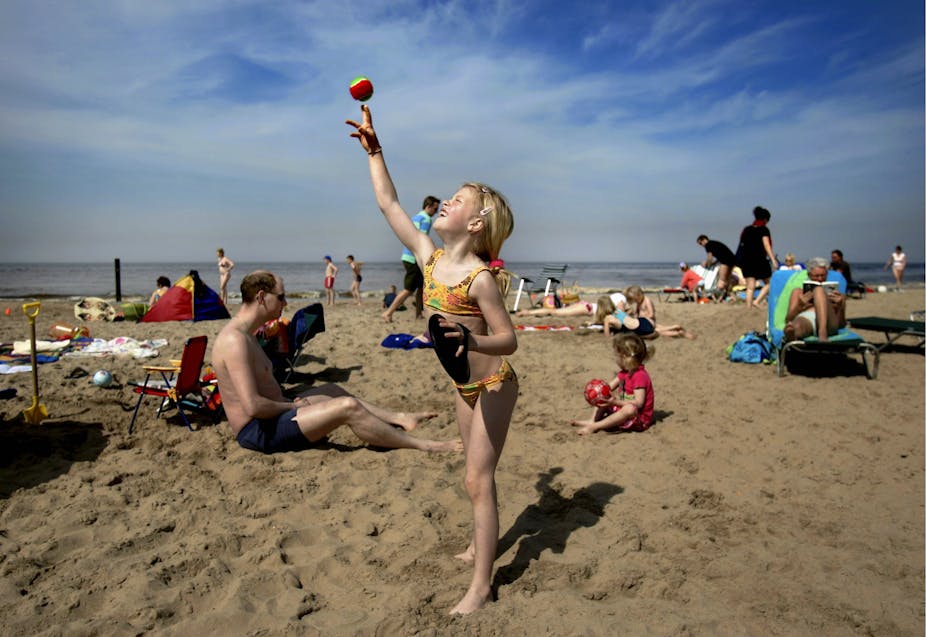The recent debate in the House of Commons on the cost of going away during the school holidays has reignited a long-running concern about price banding in the tourism industry and the educational impact of children missing classes.
However, there is a need for a sense of proportion to the arguments about parents taking their children on holiday during term-time, and some context behind the social value of holidays, particularly for disadvantaged children.
The latest data released by the department of education on pupil absence in English schools, showed that for the 2012-13 year, there was a slight 0.1% increase in overall absence rates compared to the previous year, caused by an increase in authorised absence due to illness. But trends in persistent absence are substantially lower than 2010-11.
The proportion of family holiday absences is very small, remaining stable at 0.5% of all possible sessions in 2012-13. A session is a half day, recorded by register. The data also shows that family holidays are the second highest proportion of absences by type, yet holidays account for only 11.4% of all recorded absences. Persistent absentees – defined as those who miss 46 sessions in a year – account for 22.4% of all absenteeism nationally. By far the most important reason for absence across all types of schools and age groups is authorised illness.
An important fact is that primary school age children and children with special needs skew the overall levels of absence for family holidays, whereas for secondary school children, the rate drops dramatically.
Squeezed parents
The recent commons debate was sparked by a Facebook “rant” by Paul Cookson, about the cost of travel in school holidays, whose post soon went viral. It was linked to an e-petition for a Commons debate started in 2013 by Donna Thresher, signed by over 170,000 people.
The campaign focuses on the prices set by holiday companies, but the underlying problem is one of the huge variations in seasonal flows of demand within the tourism industry, caused in large part by the structure of the school holiday calendar setting.
This was raised during the Commons debate in February when consumer affairs minister Jenny Willott suggested that school holiday calendars could be “staggered”. This would be greatly benefit the tourism industry, help spread demand and lead to price reductions.
This practice works well in France where half–term holiday dates are staggered regionally to extend the low season demand in February, May and October. It also has the additional benefit of reducing the environmental and social impacts on destinations.
Yet the proposed change in policy in England to allow all schools to set their own dates from 2015 might only exacerbate the current problem.
Clamping down on absenteeism
The current debate also stems back to the implications of education minister Michael Gove’s introduction of new guidance on the rules concerning authorised absence from school. This aimed to clarify the previous rules, which it was argued had been widely misinterpreted to mean that parents were allowed to take their children out of school for a holiday for up to 10 days per year.
The new rules, introduced in September 2013 stated that head teachers were only allowed to authorise absence in “exceptional circumstances”, thereby excluding family holidays as a valid circumstance. The rate of fines had already been going up, and there were 52,370 £60 penalty notices given out in 2012-13, up 27% on the previous year.
The government rightly argues that children should attend school to maximise their opportunities for learning, avoid disruption to teachers, other pupils and schools. The rationale for the policy points to established links between attendance and attainment, and student outcomes in terms of life-chances.
The government’s data shows that there is a strong link between poverty and absenteeism and educational attainment. Poor children are much more likely to be persistent absentees, according to data from 2009-10, before the new fines were introduced. But when it comes to family holidays, the middle classes took twice the number of authorised absences than families in the lower social categories.

Therefore it was mainly middle class families that used to utilise the authorised absence system to benefit from cheaper holidays in school term time.
Recent research conducted on disadvantaged families with difficult circumstances has pointed to the skills development, changes in attitudes and better relationships between the family and school that come out of “social tourism” activity.
Holidays can make a positive contribution to children’s learning especially for children who are currently socially excluded. Charities that are working to improve access to holiday participation through social tourism such as the Family Holiday Association point to the urgent need for joined-up thinking on educational policy on holiday absence. I would add that we need further, detailed research on the impact of family holidays on educational attainment across the social spectrum.

